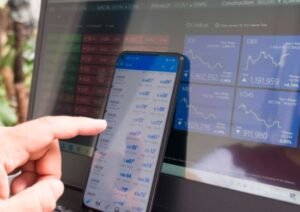Understanding Capital Requirements for Forex Trading
Forex trading offers vast opportunities, but entering this market requires a solid understanding of capital requirements. Unlike other forms of trading, the foreign exchange market operates on a global scale, with a high level of liquidity and volatility. To succeed in forex trading, it is essential to grasp how much capital is needed to begin, how to manage it effectively, and the risks involved.

The Importance of Starting Capital
Starting capital in forex trading plays a critical role in determining your potential for success. The amount you invest initially will influence your trading strategy, risk tolerance, and ability to sustain losses. Forex trading often involves leveraging, where traders borrow funds to increase their position size. While leverage can amplify profits, it also heightens the risk of significant losses. Therefore, starting with sufficient capital is vital to cushion against market fluctuations.
How Much Capital Do You Need
The amount of capital required for forex trading depends on various factors, including your trading style, risk tolerance, and financial goals. For day traders, who open and close positions within the same day, a higher starting capital is often necessary. This is because day trading typically involves larger positions and shorter time frames, requiring a more substantial financial buffer.
For swing traders, who hold positions for several days or weeks, the capital requirements may be lower. However, the risks are still present, and adequate capital is essential to withstand market swings. Most experts recommend starting with at least $500 to $1000 for retail traders, but this can vary based on individual circumstances.
Risk Management and Capital Preservation
Risk management is a crucial aspect of forex trading, directly tied to your capital requirements. Without effective risk management, even a large amount of starting capital can quickly be depleted. One fundamental principle of risk management is never to risk more than a small percentage of your total capital on a single trade. This approach helps to protect your account from significant losses and allows you to stay in the game longer.
Additionally, setting stop-loss orders is a common practice to limit potential losses. A stop-loss order automatically closes a trade when it reaches a certain loss level, preventing further losses. This tool is particularly useful in the highly volatile forex market, where prices can move rapidly in unexpected directions.
Understanding Leverage in Forex Trading
Leverage is a double-edged sword in forex trading. It allows traders to control a large position with a relatively small amount of capital. For example, with a leverage ratio of 50:1, you can control $50,000 worth of currency with just $1,000. While this magnifies potential profits, it also increases the risk of losses.
Using leverage requires a thorough understanding of its impact on your trading account. Higher leverage increases the risk of margin calls, where the broker requires you to deposit more funds to maintain your open positions. It is crucial to use leverage cautiously and align it with your risk tolerance and capital size.
Explore Online Casino Entertainment
While fx-navi provides resources and information on Forex trading, you might also be interested in exploring online casino entertainment. Discover a wide selection of games and a user-friendly platform at jackpotjill online casino. Enjoy diverse entertainment options from the comfort of your home.
The Role of Margin in Forex Trading
Margin is the amount of money required to open and maintain a leveraged position. It acts as a security deposit held by the broker to cover potential losses. The margin requirement is usually expressed as a percentage of the total trade size. For instance, if the margin requirement is 2%, you need $2,000 to open a $100,000 position.
Margin requirements vary between brokers and depend on the leverage offered. Lower margin requirements mean you can open larger positions with less capital, but this also increases the risk. Understanding margin is crucial for managing your trading account and avoiding unexpected liquidations due to insufficient funds.
Building a Sustainable Forex Trading Plan
To succeed in forex trading, it is essential to build a sustainable trading plan that considers your capital requirements. Your trading plan should include your financial goals, risk tolerance, and strategies for managing your capital. Regularly reviewing and adjusting your plan ensures it remains aligned with your evolving trading experience and market conditions.
A well-thought-out trading plan helps you avoid impulsive decisions driven by emotions. It also provides a clear framework for managing your capital, setting realistic profit targets, and minimizing risks. Discipline and consistency in following your plan are key to long-term success in forex trading.
Conclusion
Capital requirements are a fundamental aspect of forex trading that every trader must understand. Whether you are a beginner or an experienced trader, starting with sufficient capital, managing risks effectively, and understanding leverage and margin are essential to achieving success in the forex market. By building a solid trading plan and adhering to sound risk management principles, you can navigate the challenges of forex trading and work towards your financial goals.













